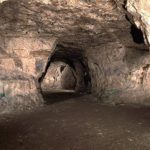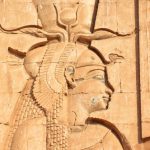 Movies and TV
Movies and TV  Movies and TV
Movies and TV  Health
Health 10 Miraculous Advances Toward Curing Incurable Diseases
 Miscellaneous
Miscellaneous 10 Undeniable Signs That People’s Views of Mushrooms Are Changing
 Animals
Animals 10 Strange Attempts to Smuggle Animals
 Travel
Travel 10 Natural Rock Formations That Will Make You Do a Double Take
 Movies and TV
Movies and TV 10 Actors Hidden in Your Favorite Movies
 Our World
Our World 10 Science Facts That Will Change How You Look at the World
 Pop Culture
Pop Culture 10 Incredible Female Comic Book Artists
 Crime
Crime 10 Terrifying Serial Killers from Centuries Ago
 Technology
Technology 10 Hilariously Over-Engineered Solutions to Simple Problems
 Movies and TV
Movies and TV 10 Movie Adaptions That Brought Popular Songs to Life
 Health
Health 10 Miraculous Advances Toward Curing Incurable Diseases
 Miscellaneous
Miscellaneous 10 Undeniable Signs That People’s Views of Mushrooms Are Changing
Who's Behind Listverse?

Jamie Frater
Head Editor
Jamie founded Listverse due to an insatiable desire to share fascinating, obscure, and bizarre facts. He has been a guest speaker on numerous national radio and television stations and is a five time published author.
More About Us Animals
Animals 10 Strange Attempts to Smuggle Animals
 Travel
Travel 10 Natural Rock Formations That Will Make You Do a Double Take
 Movies and TV
Movies and TV 10 Actors Hidden in Your Favorite Movies
 Our World
Our World 10 Science Facts That Will Change How You Look at the World
 Pop Culture
Pop Culture 10 Incredible Female Comic Book Artists
 Crime
Crime 10 Terrifying Serial Killers from Centuries Ago
 Technology
Technology 10 Hilariously Over-Engineered Solutions to Simple Problems
10 Stunning Ancient Ruins to Explore in 2024
A new year always brings a whisper of hope and a promise of better things to come. 2024 might just be the year to leave all the negativity behind and stand in awe at the best of what our planet has to offer, including the stunning ancient ruins of long-gone civilizations that have yet to reveal all their secrets.
Read on to discover some of the most incredible, albeit lesser-known ruins, around the world just waiting for you to explore them.
Related: Top Ten Most Disturbing Burial Sites Discovered
10 Sarmizegetusa Regia (Romania)
High in the Orăştie Mountains, guarded by ancient beech trees, lies the ruins of the capital of the ancient Dacian Kingdom, Sarmizegetusa Regia.
In the capital’s heyday, the Dacian people inhabited the space between the Carpathian Mountains and the area west of the Black Sea. Sarmizegetusa Regia was a cultural, military, and religious center with a massive fortress sprawling over five terraces.
Several temples and sanctuaries were built inside the capital, while the residential sections were added below the citadel. The homes were built on terraces and had running water supplied by an intricate system of ceramic pipes.
Today, there are more poems and stories about the Dacians than what remains of their beautiful capital. However, some of the massive stone walls of the fortress can still be seen, as well as andesite column bases and the remains of the temple bases.[1]
9 Ancient Theatres of Lyon (France)
Lyon, France, is where the ruins of two Roman theatres still stand, with one of the theatres dating to 15 BC. The theatres sit in the Fourvière region of Lyon, with the bigger theatre so well preserved that performances still take place there today.
The Théâtre Romain, or Grand Roman Theatre of Lyon, once held 10,000 spectators who watched as performers and singers twirled around and hit some spectacular high notes in the semi-circular pit in front of them. The columns that served as decoration for the stage held the ashes of several emperors, and the theatre offered both comedies and tragedies.
The smaller theatre, the Odeon of Lyon, lies near the Basilica of Notre-Dame de Fourvière and could once hold 3,000 people. In addition to the theatres, the ruin of an ancient Roman temple lies just behind the Grand Roman Theatre.[2]
8 Kerma (Sudan)
The ruins of the Kingdom of Kerma were first excavated during the 1920s, and archaeologists believed at the time that the metropolis once served as a fort for an Egyptian governor. These days, archaeologists believe that the King of Kerma was one of the earliest kingdoms in Africa and was valued because of its positioning on multiple caravan routes.
Over many years of excavation, Kerma has been considered a significant archaeological site in ancient Nubia (today’s northern Sudan and southern Egypt). Several thousand graves and homes have been uncovered during excavation expeditions, of which most are believed to have been abandoned as the water level in the Nile decreased.
Artifacts uncovered include blue faience and other types of pottery. Burial mounds at the site’s southern boundary are said to hold the remains of the kings.
The Kerma culture thrived in the Upper Nubia region, and the Kingdom eventually incorporated the Sai Kingdom of Sudan, after which the Kingdom became populous enough to rival neighboring Egypt. Egypt eventually destroyed Kerma under the rule of Thutmose I and annexed Nubia.[3]
7 Volubilis (Morocco)
Well-preserved Roman structures can be found worldwide, with one of the best-preserved ruins, Volubilis, located in Morocco. Volubilis arose when the cities of Meknes and Fez formed part of Mauretania and were the “hub” of all things admin within the Kingdom of Mauretania.
Some of the buildings added during the second and third centuries AD are still visible today, and it is believed that Volubilis once held more than 20,000 people. Successful olive production provided wealth, which is reflected in what remains of the city’s grand dwellings and stunning mosaics.
However, tensions rose over political dissent, and a revolt started in AD 40. Temporary calming measures in the form of citizenship and a no-tax rule were implemented, but the Romans had no choice but to withdraw from Volubilis in AD 285. The stunning buildings in Volubilis were destroyed during the Lisbon earthquake in the 18th century, and the ruins were added to the UNESCO World Heritage Site list in 1997.[4]
6 Cape Matapan & Taenarum (Greece)
Situated on the Cape Matapan in Greece is Taenarum, established by Taenarus. Depending on which account you read, Taenarus was either the son of Zeus or Poseidon.
It is believed that Taenarum, where the remains of a cave-like temple still stand, was built by the helots. The cave took on a sinister meaning, with some becoming convinced it was the gateway to Hades. This cave temple was dedicated to Poseidon.
Greek legend states that the cave doubled as a portal. Hercules dragged Cerberus through this portal during the 12 Labours. When Sparta was destroyed by a massive earthquake in 464 BC, some believe that Poseidon initiated the destruction because he was angered after the Spartans murdered helots seeking refuge at Taenarum.
Today, tourists can visit the remaining structures at Taenarum by boat even though they are partially submerged in seawater.[5]
5 Merv the Great (Turkmenistan)
The ancient city of Merv, or Merv the Great, was first occupied around 3000 BC. During 500-600 BC, several cities were built here as part of the First Persian Empire. For a short time, Merv was known as Alexandria after Alexander the Great allegedly visited the place. Experts, however, believe the name changed after Alexander the Great campaigned to overthrow the First Persian Empire.
After Alexander died, the city became the capital of Margiana, after which it was under the rule of the Sasanian Empire and became the center of religious learning.
By 1037, Merv had around 500,000 permanent inhabitants. By 1221, the son of Genghis Khan invaded Merv, and around 1 million inhabitants were killed. By 1789, the last people living in the city were removed, and Merv was destroyed.
Today, the remains of Merv stand in an archaeological park. Some of the buildings that remain were used for housing and farming. One of the most memorable ruins is that of the fortress built along with the first city that stood in Merv.[6]
4 Fatehpur Sikri (India)
Fatehpur Sikri, also known as the City of Victory, was established during the latter half of the 16th century and included several temples and monuments. The ruins of Fatehpur Sikri still hold one of the largest mosques in India, namely the Jama Masjid.
The ruins are some of the most intact in the world and also hold the remains of stunning pools, well-laid gardens, and even a harem. The smallest structure inside the complex is the Rumi Sultana Palace, which has beautiful and intricately carved columns.
Fatehpur Sikri was once the Mughal capital and was eventually abandoned when its water sources ran dry.[7]
3 Camulodunum (Engand)
Today’s Colchester in England was once the location of Camulodunum, a Roman city built during the 1st century AD. The Romans also built a massive fortress here, eventually becoming a town after being decommissioned. The town was named Colonia Victricensis and housed legionnaires who had been discharged.
Colonia became the capital of the area but was eventually destroyed by the Iceni people in AD 61 after they revolted against Roman rule. The inhabitants were killed during the revolt. Afterward, the town was rebuilt as Camulodunum and incorporated what remained of the first fortress. A chariot circus, temple, theatre, and basilica were constructed, but this could not keep the population from declining.
When Roman rule finally ceased, Camulodunum was slowly emptied of its inhabitants after being invaded by Anglo-Saxons. Today, what remains of the Roman-built walls can still be seen in Colchester, as well as high city walls that stretch along Balkerne Hill and Castle Park. The oldest surviving Roman gateway in all of Britain is also located here, namely the Balkerne Gate.[8]
2 Aquae Sulis (England)
The Waters of Sulis, or Aquae Sulis, was a Roman town in Britannia and stood in the place where Bath is today. Aquae Sulis was also the location of one of the largest Roman baths in Britain and was dedicated to the goddess Sulis. It was the physical representation of the blending of the Roman and Celtic cultures and merged Sulis with Minerva, the Roman goddess of wisdom.
The hot spring at Aquae Sulis was supposedly to be a gateway to the Otherworld because the source of its heat could not be determined. The Celts erected shrines to Sulis at the site of the spring, believing it would allow them to speak with the goddess.
When the Romans took over control of the area, they used the spring to introduce the Celts to the Roman way of doing things. They transformed the hot spring into a Roman bath complex, which started the merging process of the goddesses Minerva and Sulis. Inside the bath complex, several pools were built, as well as exercise and changing rooms.
The ruins of the Roman bath complex are well preserved and are one of Bath’s greatest attractions. While it is not possible to bathe in the water here anymore, there is a museum on the premises that holds magnificent artifacts.[9]
1 Polonnaruwa (Sri Lanka)
Polonnaruwa was established as the capital of Sri Lanka in AD 993 after Anuradhapura was destroyed. It was built by King Parakramabahu I and holds several ruins, temples, and palaces. The Polonnaruwa Kingdom also housed many civilizations over hundreds of years, including the Buddhist Sinhalese and the Cholas.
The royal palace built here between 1153 and 1186 consisted of fifty rooms. Today, many walls still stand, and gorgeous animal sculptures still dot the area. The oldest Hindu temple in the region can also be visited and is a huge tourist attraction.
Other attractions of this impressive site are the monks’ quarters, a dagoba, the Vatadage (relic house), and a huge Buddha statue. More ancient structures include the Quadrangle, various statues, and tombs. The Quadrangle is a group of concentrated ruins that are considered sacred.[10]








